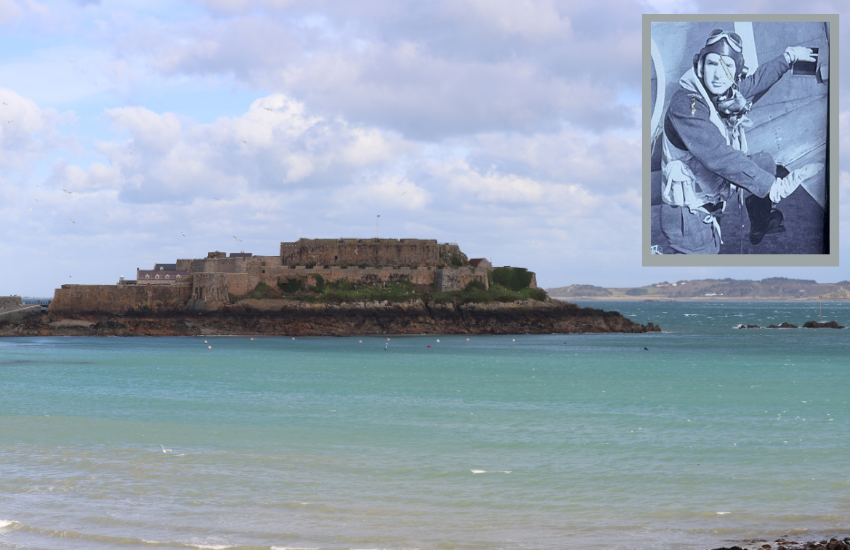


On the 80th anniversary of the D-Day Landings, Express has been exploring what it meant for people in Guernsey.
It was 6 June 1944 when Allied forces landed on the beaches of Normandy in a turning point of the Second World War.
The Channel Islands were liberated nearly a year later.
The impacts reverberated both before, during and after Operation Overlord.
You can listen here to our special podcast with Nick Le Huray, curator of the Island Fortress blog and co-host of the Islands at War podcast.
It was May 1944 when those living in Guernsey started to notice more aircraft activity around the island.
This was in marked contrast to the high-level reconnaissance flights they had become used to.
Now the allies were actively targeting German infrastructure in the island, in particular the radar station at Fort George, which covered an area west of the Normandy beaches.
The Germans knew the Allies would launch a cross channel invasion, one of the keys to its success was ensuring they did not know where and when it would take part and that required reducing the capacity of the early warning systems.
Islanders, like Miss Adele Laine, recorded in their diaries the attacks by Typhoons on Fort George.
On 27 May she wrote that at 5pm planes raided the Fort, putting one detector out of action, but it was soon working again.
Further raids took place in the following days, but the detectors were said to have carried on working.
Houses in Fort Road were damaged, but there were no civilian casualties reported, while the Occupying forces had reacted by moving large numbers of troops away from the area.
Elsewhere in a bid to ensure safety, a cross was painted on the roofs of the emergency hospital, the town hospital, the town asylum, the King Edward sanatorium, the St John ambulance station and Blancelande nursing home.
German military preparations for an invasion had already spread to the island, the personnel and structure changed and was slimmed down, while rations of electricity, gas and fat were cut. A potato ration was introduced.
Supplies to the island, which had been unreliable at the best of times, were being effected and stores being drawn on.
Death on our shores
439 Squadron RCAF attacked the radar station on 3 June, but bad weather prevented a follow up the next day.
At 08:30 on 5 June, Canadian pilot flight Lieutenant John Walton Saville led another attack on the station.
They encountered heavy anti-aircraft fire.
On his second run, six bursts of heavy flak were seen in front of his Typhoon 18.
He was seen rolling and turning left, which would have brought him out over the island, while his No2 pulled out over the sea.
It was the last contact anyone had with Lt Saville.
On June 16, 1944, Mrs. Saville received a letter from 439 Officer Commanding, S/L Norsworthy.
"Eleven days have passed now so we feel that the possibility of [Johnny] being picked up in the sea by our own Air-sea rescue services is remote...John was leading the Squadron on the operation in question, the Pilots went in on the target and because they were concentrating on it, did not notice that John was not with them until they pulled up and were on their way home.
“We immediately sent out an Air-sea rescue search, which was done in the face of severe anti-aircraft fire, so I know you will agree that we did everything we could. However, they did not see any dinghy.....Johnny as well as being a very good Flight Commander with all his Pilots solidly behind him, was also everybody's friend. In his quiet, self-assured way, he was a wonderful steadying influence on the younger fellows...We have a great team here which has trained hard and has now been tested in battle; Johnny was an important player and had had numerous successes with his Flight."
Five weeks after the crash, the body of a Canadian airman washed ashore at Fort George.
German cemetery records show that a Canadian airman was buried at the Fort George Cemetery on 24 July 1944.
The crash site was rediscovered by Guernsey Nautical Archaeology Team in Havelet Bay in 1982.
Each year, a memorial service is held on 5 June overlooking the site.
For more information visit thetyphoonproject.org.
In the immediate prelude to D-Day, senior German officers had left Guernsey for war game planning exercises. In fact, they were still away when the invasion began and it had sparked rumours among the population that the Germans were getting ready to leave.
For all the efforts to disable the radar in Guernsey, it still picked up the invasion and reported back that it had started via the signal station at St Jacques…
Tomorrow: Pt 2 - D-Day and its aftermath
Additional research from Bill Bell’s Guernsey Occupied But Never Conquered.
Comments
Comments on this story express the views of the commentator only, not Bailiwick Publishing. We are unable to guarantee the accuracy of any of those comments.